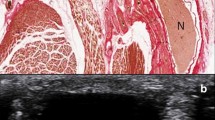Abstract
Pressure recorded from inside the cranium (intracranial pressure) is a complex function of the interaction of three compartments, each under its own physiologic control. Physiologic or pathologic changes in one compartment affect the other two compartments. The three compartments are vascular, cerebrospinal fluid, and extracellular fluid. Adaptive mechanisms are most rapid relative to the vascular compartment and slowest relative to the extracellular fluid compartments. Systems for closed-loop control of intracranial pressure could conceivably be used to manipulate any of the three compartments by measuring the variables involved in its control and manipulating them. The vascular component could be regulated by the controlled infusion of vasoactive drugs and the measurement of their effect. The extracellular space could be modified by determining its osmolality and modifying it using either dehydrating agents or direct electrical stimulation of the hypothalamic control centers for fluid and electrolyte balance. The cerebrospinal fluid compartment is at present the most easily manipulated of the three compartments. The pathologic condition where cerebrospinal fluid production is greater than absorption is hydrocephalus. In this condition, closed-loop control of intracranial pressure may be critical to prevent the conversion of a transient pathologic state into a permanent one in which a shunting device is always required. Overdrainage of the cerebrospinal fluid compartment can cause ventricular coaptation and lead to inability to control the hydrocephalus. Present systems for hydrocephalus control are valve regulated with a preset opening pressure and, occasionally, an interposed device to prevent siphoning. Feedback-loop control of intracranial pressure could, by varying flow or resistance, allow pin-point control of intracranial pressure and prevent the complications of prolonged shunting.
Similar content being viewed by others
References
Lofgrën, J., C. von Essen, and N.N. Zwetnow. The pressure volume curve of the cerebrospinal fluid space in dogs.Acta. Neurol. Scand. 49:557–574, 1973.
Marmarou, A., K. Shulman, and J. LaMorgese. Compartmental analysis of compliance and outflow resistance of the cerebrospinal fluid system.J. Neurosurg. 43:523–524, 1975.
Milhorat, T.H.Hydrocephalus and the Cerebrospinal Fluid. Baltimore, MD: The Williams & Wilkins Co., 1972, pp. 1–30.
Rekate, H.L. Establishing the diagnosis of shunt independence. Presented at the International Society for Pediatric Neurosurgery. Marseille, France, June, 1980.
Sullivan, H.G., J.D. Miller, R.L. Griffith, and D.P. Becker. CSF pressure-volume dynamics in neurosurgical patients: A preliminary evaluation in six patients.Surg. Neurol. 9:47–54, 1978.
Author information
Authors and Affiliations
Rights and permissions
About this article
Cite this article
Rekate, H.L. Closed-loop control of intracranial pressure. Ann Biomed Eng 8, 515–522 (1980). https://doi.org/10.1007/BF02363450
Issue Date:
DOI: https://doi.org/10.1007/BF02363450




